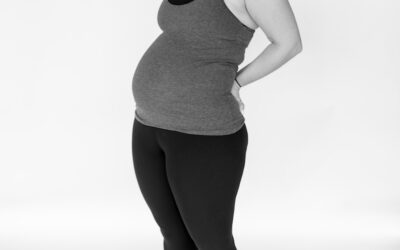When you’re expecting a baby, suddenly there’s a whole new world of information to navigate. From breast pumps to birthing plans, the learning curve can feel steep.
Two key birthing specialists that you’ll likely encounter in this process are midwives and doulas. While both can play crucial roles in supporting you through your pregnancy, along with other healthcare professionals like pelvic physical therapists (PTs) their responsibilities and qualifications differ a lot. Understanding the differences between a midwife vs. doula, and how they can impact your birthing process, is important so that you can make informed decisions about your care team. Keep reading for the details you’ve been looking for!
What is a doula vs. midwife?
Like your bestie, who always knows exactly what to say (or not to say), doulas are trained professionals who provide emotional, physical, and informational support to pregnant people and their families during pregnancy, childbirth, and the postpartum period.1 They don’t have medical training and won’t give you any medical care or medical advice — but they’re experts in making you feel like a total birthing goddess.
A midwife on the other hand, is a medical professional who provides comprehensive care during pregnancy, childbirth, and the postpartum period.2 They work in a variety of settings, like hospitals, birth centers, and even your own home! Unlike a doula, they’re the ones who’ll be catching your baby and making sure everything’s running smoothly.
In the U.S. there are three main types of certified midwives:
- Certified Nurse-Midwife (CNM)
- Certified Midwife (CM)
- Certified Professional Midwife (CPM)
Comparing responsibilities of a doula vs. midwife
When considering midwife vs. doula roles, it’s important to understand their different responsibilities.
Here are a doula’s key duties:
- Non-medical emotional support (aka holding your hand while you breathe through contractions, and so much more)
- Physical comfort during labor and delivery (think: magical back hip squeezes and position suggestions)
- Prenatal and postpartum education (because knowledge is power, especially when it comes to your pelvic floor and core)
- Birth plan assistance (because that’s confusing enough in itself)
- Facilitating communication between you and your healthcare providers (like a personal translator in the land of medical jargon).
- Advocacy during the whole birthing process (they’ve got your back when you’re too busy pushing to speak up)
- Partner support (empowering and guiding your birth partner to be an active participant, offering breaks, and providing reassurance)
Similar to an OBGYN or other physician, a midwife is responsible for:
- Performing medical interventions and procedures — including delivering your baby
- Prescribing medications (depending on their certification and state regulations)
- Comprehensive women’s healthcare (they’re not just there for birth — they’ve got you covered before and after too)
- Postpartum follow-ups to make sure you and your little one are thriving after the big day!
Midwife vs. Doula: Education, roles, and responsibilities compared
Why you might want to consider a doula
Thinking about adding a doula to your birth team? You’re not alone! So many expectant parents are starting to understand the amazing value that doulas can add — even in the case of a high-risk pregnancy. Research shows that having a doula by your side can lead to:
- Fewer medical interventions: Doula-supported moms are less likely to need an epidural or pain medication during labor.3 They’re also less likely to have a cesarean delivery.4
- Improved outcomes: When women have continuous support during labor, newborns tend to have increased 5-minute Apgar scores.5 Plus moms — including those at high risk for complications during labor and birth — have better luck with breastfeeding and there were fewer low birth weight and premature deliveries.4,6 Win-win-win!
- Improved mental health: Doula’s support is linked to a nearly 60% decrease in postpartum depression and anxiety rates.7 Moms also report feeling more confident and satisfied with their birthing experience.4
It’s also important to understand that doulas may be even more beneficial for low-income women and disadvantaged communities, by improving labor outcomes and early lactation success.7
The dream team: doulas and pelvic PTs (and a midwife if you choose)
Imagine combining the emotional support of a birth doula, the medical expertise of a midwife or OBGYN, and the pelvic-floor-prowess of a pelvic PT. This OBGYN and/or midwife vs. doula vs. pelvic PT dynamic can create a pretty amazing support system for anyone expecting.
While birth doulas help communicate your wishes to medical staff and offer continuous emotional support, a midwife or OBGYN provides medical expertise. And both work together to make sure you feel informed and in control of your birth. So, where does a PT fit in?
Pelvic health physical therapy
Understanding how pelvic PTs fit into the midwife vs. doula framework can help you create a well-rounded support team. Pelvic PTs play a crucial role in preparing your body for the physical demands of childbirth, complementing the emotional support provided by doulas and the medical care overseen by midwives or OBGYNs.
Pelvic PTs help you:
- Prep your pregnant body for the marathon of birth with specialized exercises
- Address pregnancy aches and pains
- Master breathing and pushing techniques
- Navigate postpartum recovery
- Safely return to exercise and sex (without peeing yourself every time you jump)
This collaborative approach ensures well-rounded care, combining:
- Emotional support from doulas
- Medical guidance from midwives
- Physical preparation from pelvic health PTs
Creating your comprehensive birth support team
Understanding the roles of doulas, midwives, and pelvic health physical therapists can help you put together a supportive team for your birthing day. By combining the emotional and physical support of a doula, the medical expertise of a midwife or OBGYN, and the specialized knowledge of a pelvic health physical therapist, you can create a well-rounded care plan that addresses all aspects of your childbirth experience. They can work together to improve your birth outcomes, increase your satisfaction, and give you a more empowering birth experience.
For even more guidance and support during pregnancy, birth, and beyond, explore the Pregnancy Preparation Program in the V-Hive. You’ll get even more valuable insight into what to expect during birth and all the exercises your whole body needs to prepare physically for birth and beyond. And for more information about creating your ideal birth support team, including information on working with doulas, midwives, and pelvic health physical therapists, you can schedule a virtual consultation with one of our experienced pelvic health specialists.
Whatever you need, the V-Hive membership is here for you. Start your free trial membership today and get instant access to every workout.
References
- Dona International. (n.d.). What is a doula? Dona.org
- American College of Nurse-Midwives. (n.d.). About the midwifery profession. Midwife.org
- Hans, L.S., et. al. (2018). Randomized controlled trial of doula-home-visiting services: Impact on maternal and infant health. Matern Child Health J.
- Sobczak, A., et. al. (2023). The effect of doulas on maternal and birth outcomes: A scoping review. Cureus.
- Bohren, M. A., et. al. (2017). Continuous support for women during childbirth. Cochrane Database Syst Rev.
- March of Dimes. (2022). Doulas can improve care before, during, and after childbirth. Marchofdimes.org
- Falconi, A. M., (2022). Doula care across the maternity care continuum and impact on maternal health: Evaluation of doula programs across three states using propensity score matching. eClinicalMedicine.








